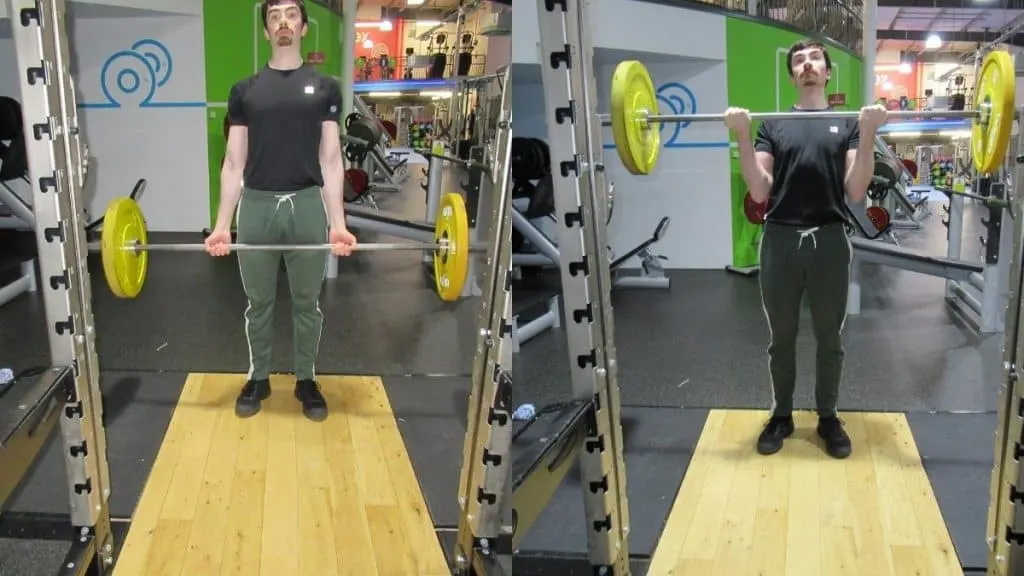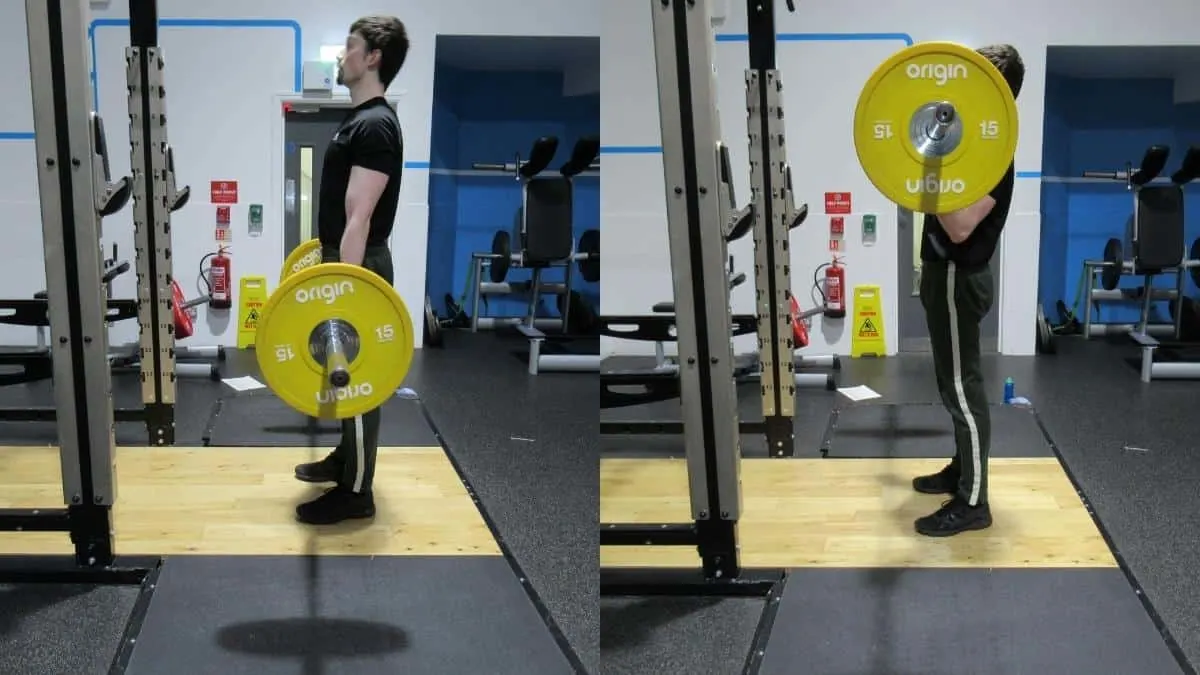50 kilograms is a good max bicep curl. So if you can curl 50 kg for reps, then you’re very strong indeed.
Your bicep muscles are, in fact, a lot stronger than you probably think.
With that in mind, this article uses real-life case studies of people curling 50 kg with a barbell and even with dumbbells to show you just how much strength potential the biceps have.
See How Your Bicep Curl Stacks Up:
Is a 50 kg bicep curl good?

Is a 50 kg barbell curl good?
Yes, a 50 kilogram barbell curl is a very good lift, irrespective of whether that’s a one-rep max or for multiple repetitions.
Of course, the more reps that you perform and the stricter you’re lifting technique is, the better and the more impressive your 50 kg bicep curl will be.
Still, curling 50 kg for any amount of reps—with good form—is a feat of strength that most recreational gym-goers will never accomplish. So you can count yourself (or, more specifically, your biceps) as much stronger than average if you can genuinely perform a 50 kg barbell curl for any number of reps.
Is it possible to perform a 50 kg dumbbell curl?
Considering that lifting 50 kg in each hand during a bench press is an excellent feat of strength, you’d be forgiven for thinking that a 50 kg dumbbell curl is a complete impossibility.
Actually, it’s not.
There are examples of people—filmed on video—curling 50 kg dumbbells for multiple reps.
Now, you can’t expect anyone’s form to be textbook when they’re lifting 50 kg in each hand. But still, I was pretty impressed by the lifting technique in some of the videos that I watched.
A good way to make a 50 kg dumbbell curl more attainable is to do 50 kg hammer curls. When you curl with a neutral grip, you automatically put your brachioradialis and brachialis muscles in stronger positions, which enables you to lift heavier weights and do more reps.
How about a 55 kg bicep curl?
Although you might not think that a 55 kg barbell curl is all that different from a 50 kg barbell curl, you’re actually increasing the load by 10%.
A 10% weight jump is significant when you’re already curling a lot of weight.
For this reason, unless you’re using a loadable bar and have access to fractional plates, you’re going to need to curl 50 kg for sets of 10-12 reps before you can budge 55 kg for more than a few reps.
So yes, a 55 kg bicep curl is a very impressive lift. Five more kilograms and you’re at one of the major curling milestones in the world of strength training!
Just remember that you need to do a 52 kg curl (or 52.5 kg curl) before you jump to 55 kg. It’s essential to use small weight increments when you’re already curling heavy poundages.
50 kg bicep curl case studies
Learn the size, strength, and effort that it took a variety of different lifters to curl 50 kg
Case study 1: matty8hiker
The man behind the YouTube channel matty8hiker, who has a very muscular physique, managed to perform a 50 kg barbell curl for 12 hard-earned reps.
His form was very good, even though he leaned back slightly during some of his reps.
And, of course, his bicep development speaks for itself. So it’s clearly ok to allow some slight body movement when you’re curling as much weight as this fella is.
As mentioned, 50 kg is a decent one rep max, so the fact that he was able to curl some people’s max 12 times is testament to the fact that curling strength is mainly a function of bicep size (he has some very good biceps).
Case study 2: Bazinga
The man who operates the YouTube channel Bazinga has a truly excellent physique and very well-developed biceps, with which he managed to curl 50 kg for 10 reps.
If you want to see what good form looks like, then pay close attention to his video. In addition to his training intensity and consistency, Bazinga’s hypertrophy-focused lifting technique is likely one reason why he has such a muscular body.
Unlike the average lifter who attempts a 50 kg bicep curl, this guy kept his knees locked out the entire time so that he couldn’t jerk the bar up with his legs.
As I’ve said before, it’s much better to perform fewer reps with good technique than it is to do double the reps with sloppy form. This is because, despite doing fewer reps, you’ll actually be placing more tension on your biceps when you evoke the discipline to curl strictly.
Case study 3: Chris Weaver
We’ve featured Chris Weaver before for his impressive curling strength (especially curling for reps).
This time, he curled 50 kilograms with a close grip, which I definitely think is a bit harder than a regular grip.
More importantly, Chris used extremely strict form, which is likely why his biceps are so well-developed. Many people avoid locking out their elbows so that they can squeeze out more reps, but Chris clearly understands that proper form is crucial because he achieved full elbow extension on every rep.
Case study 4: jeffreytieku
If you thought that a 50 kg barbell curl was an impressive display of strength (it certainly is), wait until you see the 50 kg dumbbell curl performed by Jeffrey Tieku.
Sure, he only did 3 reps, but his form wasn’t as bad as you’d think. He supinated his wrists on every rep and clearly used his biceps for the vast majority of the lifting.
It’s unlikely that even professional bodybuilders could curl 50 kg dumbbells strictly, so you have to give this guy credit for even attempting such an incredible feat of bicep strength.
I’m as relieved as you are that he didn’t tear a bicep!
Conclusion: How impressive is a 50 kg barbell curl?
A 50 kg bicep curl of any kind is very impressive, and that most certainly includes a 50 kg barbell curl.
A one-rep max 50 kilo curl is a good amount of weight for an intermediate lifter.
Curling 50 kg for multiple reps and sets (especially if you can do 10 or more reps) places you firmly in the advanced category.
50 kg dumbbell curls, on the other hand, are for the 1 %. The good news, of course, is that you don’t need to lift 50 kilograms in each hand in order to sculpt fantastic biceps. The case studies that you saw above are testament to that.
References
- O’Connor, A. (2021). How to Get Strong. The New York Times. https://www.nytimes.com/guides/year-of-living-better/how-to-build-muscle-strength
- Frothingham, S. (2020, January 24). Hypertrophy Training vs. Strength Training: Pros and Cons. Healthline. https://www.healthline.com/health/exercise-fitness/hypertrophy-vs-strength

